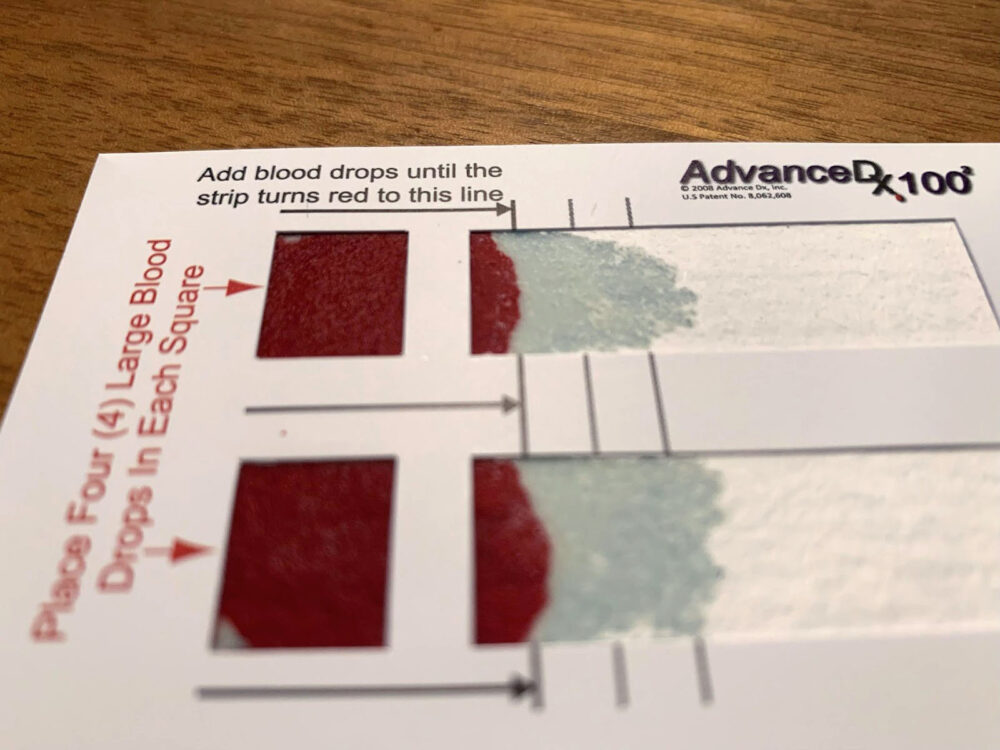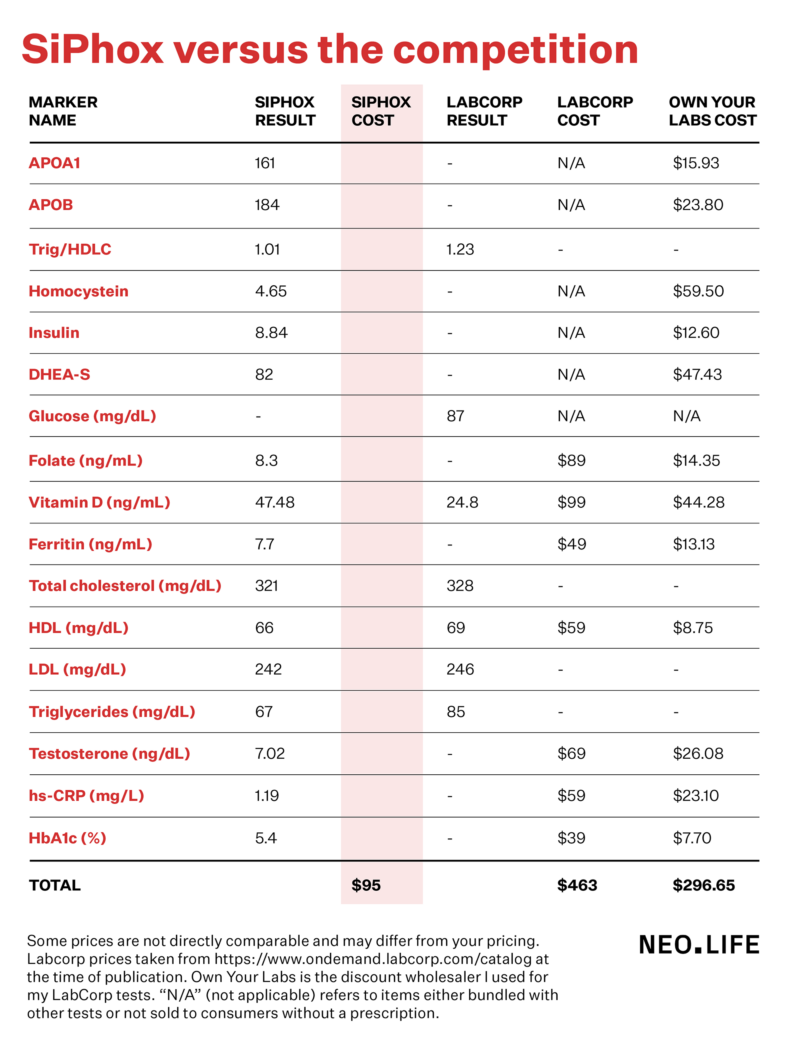SiPhox’s coming silicon photonics technology seems to deliver on at least some of the promises Theranos made.
One of the rites of your annual physical exam (you do go annually, don’t you?) is the blood test. If you’re reasonably healthy, your doctor will check your weight and blood pressure, ask you to breathe in and out while listening to your heart, suggest you exercise more, and send you on your way. But that blood test is what really catches any potential problems: your cholesterol, fasting glucose, and a few other measures contain warning signs of many diseases. Now that so many of us supplement our health regimen with fitness trackers—Oura, Fitbit, Apple Watch—it’s reasonable to ask why they bother checking your heart rate at the doctor’s office. Well, that blood test is one thing you can’t do yourself. Until now.
SiPhox Health was founded by two former MIT researchers who specialized in silicon devices that manipulate photons (a technology called “silicon photonics”—the company’s name is “SiPhox”, get it?) the same way that transistors manipulate electrons. Although photons—i.e. light—can do many of the same jobs as the electrons used in your iPhone, they don’t need wires. So, for example, you can send photons back and forth through blood vessels without needing to physically attach anything. This makes them ideal for a new generation of body monitoring devices that will someday give us continuous real-time feedback on much more than, say, the numbers you get from a continuous glucose monitor.
The SiPhox founders, who started their company just before the COVID-19 pandemic, originally intended to make wearable devices for real-time monitoring of glucose and other biomarkers. But that would take years, and COVID-19 got them thinking of ways to accelerate their launch. They already knew how to make super-cheap optically based blood sensors, so rather than ship the sensors—and all the complicated manufacturing and support that involves—they settled on a plan to collect blood samples through the mail, using conventional technology to hone their logistics in preparation for a launch of fully at-home hardware devices in 2023.
Testing the test
So how well does it work for routine blood work?
I ordered my first SiPhox Health kit a few weeks ago. Because the tests are so much cheaper than alternatives, the company wants you to sign up for monthly subscriptions rather than a once-only test. The basic one, at $95 a month, detects about 20 biomarkers (see table), including the sex hormones testosterone (in the male version) and estrogen (female). All of the biomarkers are worth watching—including many (like vitamin D) that are not covered as part of the annual physical under most insurance plans. A national provider like Labcorp charges $100 for the vitamin D test alone—more than the entire SiPhox panel. Unless—big if—your insurance covers all these tests, the Labcorp total would be close to $500—and I can do it at home, without the trouble of an appointment.
The kit comes with finger pricking lancets, an index-card sized paper sample collector, Band-Aids, and a return envelope. The collection process was very simple, especially if you’ve ever done at-home glucose testing. I poked one of my fingers with the ordinary-sized lancet and squeezed a few drops of blood onto the sample collection card.
To test the accuracy, I did the SiPhox test immediately following a blood draw by a professional phlebotomist at a Labcorp clinic near me. Both tests were done an hour or two after waking and 14 hours without any food except water.
After I threw the card into the return mailer, the company immediately began sending me automated messages to confirm where the sample was. I sent mine on a Thursday and had the results by the following Tuesday.

Mixed results
So how did the two tests compare?
Good news on the lipid results: the numbers for both Labcorp and SiPhox were almost identical. My cholesterol breakdown was off only by a few points for both HDL and LDL. Triglycerides were slightly different, but directionally the same. A doctor would give the same treatment advice for either test.
Side-by-side testing for all the numbers would have cost upwards of $500, so I didn’t test everything since I was paying everything myself (including the SiPhox test—I bought it just like any customer would). But I did have Labcorp check my vitamin D, and those numbers were significantly different from SiPhox.
I’m impressed enough with SiPhox that I’ll continue my testing.
Vitamin D is a tricky molecule to test—hence the $100 charge from Labcorp—partly because typical concentrations are so much lower than for the lipids in a cholesterol check. When I asked the company about the different results, they stood behind their results “directionally”—meaning, their extensive internal testing found that, when blood levels of vitamin D go up, the test results go up too, and vice versa. This is part of the reason why long-term it makes more sense for SiPhox to be a wearable. If your results were updated every few minutes instead of needing to be sent through the mail, you could calibrate for your own personal biology, potentially yielding a more accurate picture than the single-point-in-time number that any lab test gives today.
My subscription means I’ll have another test next month; if I begin a course of supplements, the company says I’ll almost certainly see a “directional change”—my numbers will go up or down in line with my supplementation.
I haven’t yet tried a side-by-side test of the dozen other biomarkers provided (will you lend me $500 to try?), but another customer told me that he found the values for DHEAS and hsCRP to be consistent across labs, and reassuringly, like me, his cholesterol results were spot on.

Overall, despite a few biomarker inconsistencies compared to Labcorp, I’m impressed enough with SiPhox that I’ll continue my testing. Now that the technology for lower-cost and ultimately continuous testing is on the way, the once-a-year blood test at my annual physical exam seems about as useful as having a once-a-year heart rate test. My doctor will be able to spend more of our annual visit suggesting I exercise more.
Could this be the sort of low-cost, less painful, and ultimately continuous testing technology Theranos boasted about? That’s my hope. Not all Stanford dropouts in turtlenecks are geniuses. Not all seemingly breakthrough advances are fraud. Ultimately it’s science that decides.
Editor’s note: This piece was updated on 12/16/22 to correct the technology described in the third paragraph after SiPhox clarified that the author’s test was run on conventional equipment, with their proprietary photonics-based products coming in 2023.












